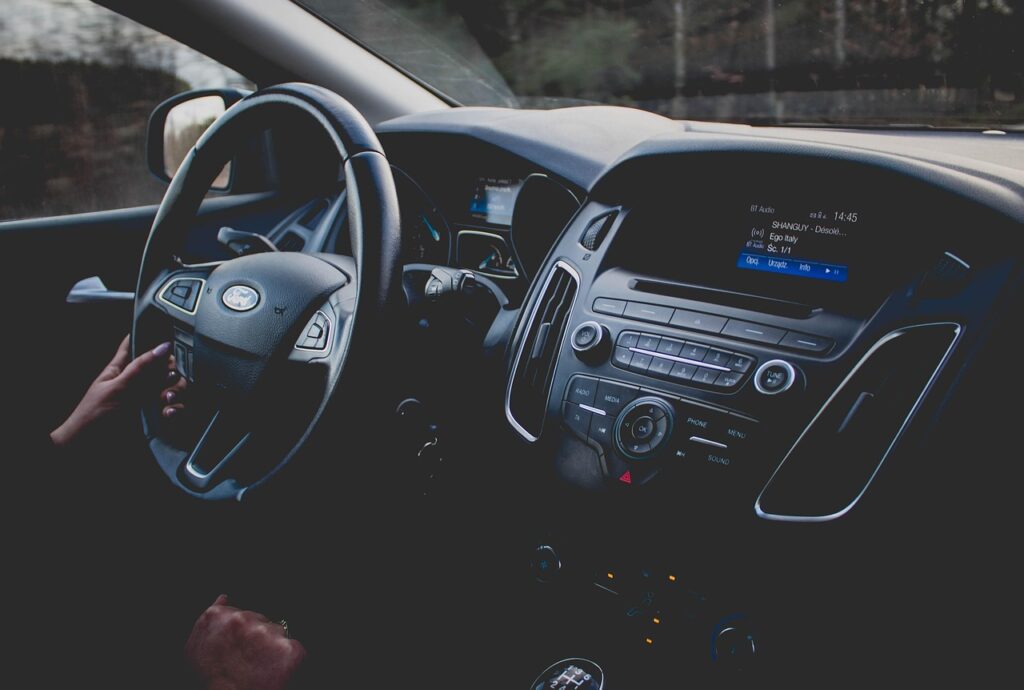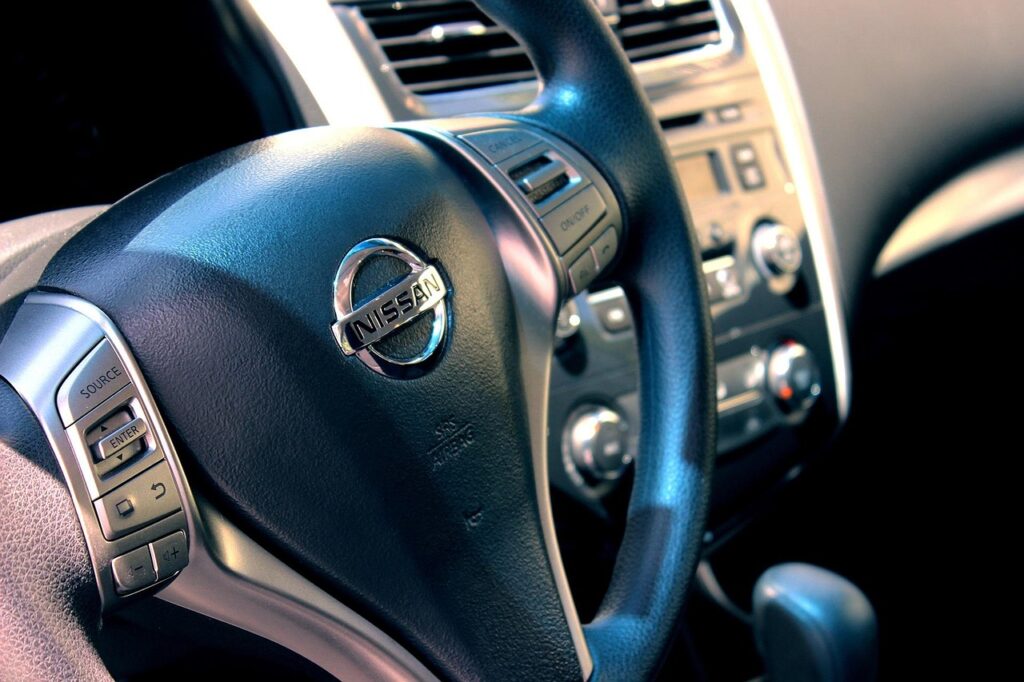Modern vehicles, relying on advanced electronics and seamless connectivity, have evolved into sophisticated, moving computers. This technological leap offers unparalleled convenience and enhanced safety, but also ushers in a new era of vulnerability: car hacking. Like your home computer or smartphone, your vehicle is susceptible to bugs, viruses, and cyberattacks, posing risks from minor annoyances to severe safety hazards.
The automotive security landscape is rapidly changing. Traditional car security focused on physical theft, but today’s threats emerge from the digital realm. Self-driving cars and vehicles with advanced safety features like adaptive cruise control are particularly at risk; virtually any car from recent years can be disabled by a determined hacker. Understanding these vulnerabilities empowers us to take proactive steps, safeguarding our vehicles and personal safety.
In this in-depth exploration, we’ll strip away the jargon and delve into the technical mechanisms behind some of the most critical car hacking threats. We’ll examine exactly how these digital intrusions can seemingly make your car develop a mind of its own, from disabling essential systems to compromising your personal data. By understanding the “how,” we can better appreciate the “why” and ultimately prepare ourselves with the practical knowledge needed to stay safe on the increasingly connected roads of tomorrow. Let’s unlock the complexities of car cybersecurity, starting with the primary avenues of attack.

1. **Remote Control of Critical Vehicle Functions: When Your Car Develops a Mind of Its Own** Imagine cruising down the freeway at 70 miles per hour, only to have your brakes disabled or your car suddenly accelerate without your input. This isn’t the stuff of science fiction; it’s a theoretical, yet increasingly plausible, reality in the age of connected cars. Modern vehicles rely on intricate networks of microprocessors and onboard computers to manage everything from the engine’s performance to the functionality of your braking system. When hackers gain access to these core systems, they can manipulate critical functions with potentially catastrophic consequences.
One alarming aspect of this vulnerability involves the braking system. While you physically press the brake pedal, the actual work is executed by microprocessors in your vehicle’s onboard computer. A sophisticated hacker who breaches this computer can effectively disable your brakes, or even shut off your engine while the car is in motion. Similarly, power locks, often integrated with automatic locking features linked to speed or airbag deployment, can be exploited. In such interconnected systems, hackers could potentially use the power lock mechanism to force a car to accelerate, putting occupants in grave danger.
The threat extends to seemingly benign systems like air conditioning or windshield wipers. In extreme climates, air conditioning isn’t just about comfort—it’s a safety feature. Hackers can blast hot air in the summer or activate seat warmers, creating discomfort or even health risks. Windshield wipers and fluid release, while seemingly minor, can become a visibility hazard if activated unexpectedly or continuously. These examples underscore that even systems not directly tied to propulsion or braking can be weaponized to compromise driver safety and control.
Vehicle manufacturers are constantly developing countermeasures, but the complexity of modern automotive software means new vulnerabilities can emerge. As vehicles become more independent and interconnected, the attack surface for remote control hacks expands. This necessitates a proactive approach from both manufacturers and drivers to understand and mitigate these critical risks, ensuring that control remains firmly in the hands of the person behind the wheel. The sheer potential for an attacker to remotely take over a moving vehicle highlights the urgent need for robust cybersecurity measures.

2. **Infotainment System Vulnerabilities: A Gateway to Deeper Intrusions** Your car’s infotainment system—the central hub for GPS, music, smartphone connectivity, and sometimes even a web browser—is a prime target for cybercriminals. While designed for convenience and entertainment, these systems are essentially computers themselves, complete with operating systems and network connections, making them susceptible to many of the same attacks as your personal devices. Exploiting these systems can range from minor annoyances to significant security breaches, potentially granting hackers access to more critical vehicle functions or your personal data.
One insidious method of attack involves MP3 malware. Downloads containing malicious code can be introduced into your car’s infotainment system, for instance, through a USB drive or an infected media file. Once inside, this malware can propagate to other interconnected systems, including those that control your engine or brakes. This demonstrates how a seemingly innocuous act like playing music can become a vector for a far more serious compromise, illustrating the interconnectedness and potential fragility of modern automotive architectures.
Beyond malware, hackers can use the infotainment system to make small but unnerving changes. Imagine your radio station suddenly switching, or your GPS destination being altered while you’re driving. These are not merely pranks; they are clear indicators of unauthorized access. Similarly, if your car has a built-in web browser or allows for third-party apps, these can introduce significant risks. Untrusted apps can install malware, and using the in-car web browser exposes you to the same threats as browsing on an unprotected computer, potentially allowing for phishing attacks or further malware installation.
Compromised car apps on your smartphone, which allow remote functions like unlocking or starting your car, represent another critical vulnerability. If hackers break into your account for these apps, or exploit a software bug, they can gain control over your entire vehicle. This highlights the need for strong, unique passwords and two-factor authentication for these apps, along with keeping their software up-to-date. The infotainment system, therefore, is not just about entertainment; it’s a potential gateway that requires the same security diligence as any other networked device.

3. **Key Fob Attacks: The Invisible Hand Unlocking Your Car** The convenience of keyless entry has become a standard feature in most modern vehicles, allowing drivers to unlock and start their cars without ever touching a physical key. However, this wireless technology, which relies on your key fob communicating with your vehicle, has inadvertently opened new avenues for sophisticated theft. Thieves, often equipped with readily available and relatively inexpensive electronic devices, can exploit these wireless signals to gain unauthorized access to your car, even when your key fob is supposedly out of range.
The “relay hack” is one of the most prevalent key fob attacks. This method exploits the always-on nature of many key fobs. It involves two thieves: one stands near your car with a relay box, while an accomplice stands near your house or where your keys are located, scanning for the key fob signal with another relay device. When your key fob’s signal is picked up, it is then transmitted to the box closer to your car. This effectively tricks your vehicle into thinking the key fob is within range, prompting it to unlock the doors. This can happen even if your keys are inside your home, several feet away from your car.
Another common key fob vulnerability is “keyless jamming.” In this scenario, criminals use a device to block the signal from your key fob to your car. You might press the “lock” button on your fob, hear the familiar click, and walk away, assuming your car is secure. However, the jamming device prevents that lock command from reaching your vehicle, leaving your doors unlocked and your car vulnerable. Thieves can then easily access your vehicle, sometimes without any visible signs of forced entry, allowing them to steal valuables or even the car itself.
The proliferation of cheap electronics and relay gadgets online has made these key fob attacks more common than ever. While newer car models are designed to require the key fob to be within a very short range (sometimes just one foot) to unlock, these relay boxes are becoming increasingly powerful. Understanding these specific attack vectors is crucial for drivers to implement effective countermeasures, such as signal-blocking pouches or even simple household items that can prevent these invisible intrusions and maintain the security of their vehicles.
4. **Onboard Diagnostics (OBD) Port Exploitation: A Direct Line to Your Car’s Brain** Every modern car manufactured since 1996 is equipped with an Onboard Diagnostics (OBD-II) port, a standardized interface that mechanics use to access your car’s data, read error codes, and perform various diagnostics. While invaluable for vehicle maintenance and troubleshooting, this port also represents a direct physical gateway to your car’s critical electronic control units. In the wrong hands, the OBD-II port can be exploited by hackers and thieves to manipulate vehicle systems, program new keys, or even extract sensitive driving data, bypassing many digital security measures.
One of the most concerning vulnerabilities associated with the OBD-II port is its use in vehicle theft. Exploit kits, which are readily available online, can be plugged directly into this port. These kits allow criminals to replicate existing keys or program entirely new ones for your vehicle in a matter of minutes. Once a new key is programmed, the thief can simply start your car and drive away, leaving no traditional signs of forced entry. This method is particularly effective because it leverages the legitimate diagnostic access designed into the vehicle, turning a utility into a security flaw.
Beyond physical theft, the OBD-II port can also be used for more subtle forms of manipulation. Unscrupulous repair shops, for instance, could potentially manipulate your vehicle’s diagnostics system to make it appear that you need repairs that are not actually necessary. By altering error codes or sensor readings, they can create a false impression of malfunction, prompting you to authorize costly and unneeded services. This kind of exploitation can be difficult for the average car owner to detect, as it mimics legitimate diagnostic procedures.
The physical nature of OBD-II port hacks means that security relies heavily on who has access to your vehicle. While manufacturers are implementing encryption and security protocols for data accessed through the port, the fundamental direct access it provides remains a significant risk. Therefore, vigilance about who works on your car and understanding the potential for malicious use of diagnostic tools becomes paramount. Protecting this physical access point is as crucial as securing any wireless or software vulnerability in the ongoing battle against car hacking.

5. **The Kia Remote Takeover: A Real-World Case Study in License Plate Vulnerability** While many car hacking scenarios are discussed theoretically, real-world examples serve as potent reminders of the immediate dangers. Sam Curry’s research in June 2024 brought to light critical security vulnerabilities in Kia vehicles, demonstrating how attackers could remotely control essential vehicle functions using nothing more than a license plate number. This case study starkly illustrates the convergence of various vulnerabilities into a single, highly effective attack vector, exposing how seemingly minor security flaws can lead to profound risks.
Curry’s team discovered that these vulnerabilities were so severe they could be exploited in under 30 seconds on any Kia vehicle equipped with the necessary hardware, regardless of whether it had an active Kia Connect subscription. The attack went beyond mere control; attackers could also quietly retrieve personal details such as the owner’s name, phone number, email, and physical address. This allowed them to add themselves as an unnoticed secondary user on the victim’s vehicle, effectively taking ownership without the legitimate owner’s knowledge or consent.
The exploitation hinged on weaknesses in Kia’s backend systems, specifically related to how their Owners website, Connect iOS app, and crucially, their Dealer website processed commands and user registrations. By registering and authenticating as a “dealer” using the same API structure as the owners’ website, Curry’s team could generate valid access tokens. These tokens then allowed them to query backend dealer APIs, revealing sensitive details about vehicle owners and enabling them to modify ownership profiles.
The attack flow was chillingly straightforward: generating a dealer token, fetching the victim’s email and phone from their VIN (resolvable from a license plate via third-party APIs), modifying the owner’s profile to deny access, and finally, adding the attacker’s email as the primary owner. This granted full remote control to unlock, start, honk, or track the vehicle. The lack of victim notifications amplified the danger, highlighting needs for robust API security and user notification. Kia has since patched these issues, but this incident serves as a powerful testament to real-world connected car vulnerabilities.
Continuing from the vulnerabilities explored, it’s clear that vigilance is paramount. But what can an everyday driver *actually* do? While manufacturers bear the primary responsibility for building secure systems, there are practical, actionable steps you can take today to significantly bolster your vehicle’s defenses. It’s about empowering yourself with knowledge and applying smart habits, transforming passive worry into proactive protection. Let’s delve into five essential strategies to fortify your connected ride against the ever-evolving landscape of cyber threats.

6. **Safeguarding Your GPS and Personal Data: The Digital Map to Your Life**Your car’s navigation system offers unparalleled convenience, guiding you effortlessly to your destination. However, this same convenience can inadvertently create a digital roadmap of your life, making you a target for those with malicious intent. Programming your home address directly into your GPS, for example, is a common habit that, while practical, poses a significant risk. If your car is stolen or hacked, that address becomes a direct invitation for criminals to access your home, especially if they also gain control of a connected garage door opener.
Beyond immediate physical risks, modern vehicles equipped with GPS or telematics systems meticulously record a wealth of driving data. This information can include your car’s location, speed, mileage, and even your driving behavior. If this data falls into the wrong hands through a hack, it can be used to exploit your privacy in unsettling ways, potentially revealing where you live, work, or even where your children attend school. This kind of information is gold for identity thieves or stalkers, underscoring the need for careful consideration of what data your vehicle collects and how it’s stored.
The connection between your smartphone and your vehicle further complicates this data privacy landscape. Hackers may be less interested in your vehicle’s internal systems and more focused on your connected mobile phone, which often holds sensitive information like credit card details, passwords, and financial data. If they manage to breach your car’s system and, through that, access your connected mobile phone, your most personal information could be at severe risk. This highlights how interconnected systems amplify vulnerability, turning your car into a potential conduit for broader digital attacks.
To mitigate these risks, a simple but effective strategy is to avoid programming your exact home address into your car’s GPS system. Instead, consider using a nearby public landmark, like a local park or store, as your “home” destination. This adds a layer of obfuscation that can deter opportunists. Furthermore, be mindful of the driving data your car records; while you may not be able to disable all telematics, being aware of its existence is the first step toward informed decision-making about your privacy.

7. **Fortifying Your Key Fob Against Stealthy Intrusions**The convenience of keyless entry and ignition has become a staple of modern driving, yet it paradoxically introduces a new frontier for car theft. Your key fob, constantly emitting a signal, is vulnerable to sophisticated “relay hacks” where thieves use electronic devices to extend its range, tricking your car into unlocking even when your keys are safely inside your home. Similarly, “keyless jamming” allows criminals to block your lock command, leaving your vehicle unsecured without your knowledge.
One of the most straightforward and effective countermeasures against key fob attacks is to invest in a signal-blocking pouch, often referred to as an RFID-blocking pouch. These small, Faraday cage-like bags are designed to completely prevent your key fob’s signal from escaping, rendering it invisible to relay devices. Placing your key fob inside one of these pouches when you’re at home or in public places adds a critical layer of security, effectively neutralizing the extended range threat.
For those who prefer a more DIY approach or an immediate solution, certain household items can also serve as effective signal blockers. Sticking your key fob into your refrigerator or freezer, for instance, can work. The multiple layers of metal in these appliances act as a barrier, containing the signal. However, it’s always wise to check with your car manufacturer to ensure that freezing temperatures won’t damage your key fob’s delicate electronics before making this a regular practice.
Another readily available option is to wrap your key fob in aluminum foil. Since metal blocks the signal, a proper wrap can be surprisingly effective. While this is arguably the easiest solution, it requires careful execution to ensure there are no gaps for the signal to leak through. For a more permanent and robust DIY solution, you could even craft a foil-lined box to securely store your keys, providing a dedicated and reliable signal-blocking container.
Beyond these technical solutions, simple habits can make a huge difference. Always make it a practice to manually check your car doors before walking away, even if you heard the “click” from your fob. This helps confirm that your lock command actually reached the vehicle. Additionally, consider installing a physical steering wheel lock. While key fob hacks aim for “invisible” entry, a visible deterrent like a steering wheel lock can still make your vehicle a less attractive target, deterring thieves even if they manage to get inside.

8. **Vigilant Software Management and Smart App Usage**Modern cars are software-driven machines, and just like any computer, their software requires diligent management to remain secure. Your vehicle’s infotainment system, often connected to the internet and capable of running apps, presents a significant attack surface. Neglecting software updates or installing untrusted applications can open direct pathways for malware and unauthorized access, compromising not just your entertainment but potentially deeper vehicle functions.
For car apps on your smartphone that allow remote functions like unlocking or starting your car, robust security is non-negotiable. These apps are protected by usernames and passwords, and if hackers exploit a bug or crack your credentials, they can gain control over your entire vehicle. The advice is clear: change default passwords immediately, use strong and unique passwords for these apps, and never reuse credentials from other services. Crucially, enable two-factor authentication (2FA) if available, and make a habit of keeping the app’s software consistently updated to patch known vulnerabilities.
The in-car web browser and third-party app ecosystem, where available, demands the same caution you’d exercise on a personal computer. Untrusted apps can introduce malware, and browsing the internet directly through your car’s system exposes you to the same threats as an unprotected computer, including phishing attacks and further malware installation. The safest practice is to avoid using your car’s built-in web browser entirely; instead, use your mobile phone while safely parked. Furthermore, practice good computer safety: never open emails or messages, nor follow links from unknown sources, even if they appear on your car’s screen.
Staying on top of vehicle recalls is another critical, yet often overlooked, aspect of software security. Cybersecurity-related recalls, such as the one for the Jeep Grand Cherokee UConnect entertainment system, are issued when vulnerabilities are discovered that could allow remote control of critical functions. These recalls often involve software upgrades delivered via a USB device or dealership visit. All vehicle owners should pay close attention to recall notices and promptly implement any recommended software updates, as these are direct fixes from the manufacturer for identified security flaws.
Finally, consider the security benefits of using your smartphone to manage your car’s entertainment system through platforms like Android Auto or Apple CarPlay. These systems leverage the robust security architecture and regular updates of your mobile device, which typically have more advanced malware protections than a standalone infotainment system. By channeling your car’s entertainment and navigation through a device you actively secure, you can create a more responsible and potentially safer environment, especially if you consistently apply mobile security best practices.
9. **Securing Physical Access and Reputable Maintenance**While much of car hacking focuses on digital or wireless intrusions, physical access to your vehicle remains a potent vulnerability. The Onboard Diagnostics (OBD-II) port, a standard feature in cars since 1996, is a direct gateway to your car’s internal computer systems. Designed for mechanics to diagnose issues and perform maintenance, this port can also be exploited by criminals. Readily available exploit kits can be plugged in to program new keys or replicate existing ones, allowing a thief to start your car and drive away with no forced entry.
Given this inherent risk, the choice of where you take your vehicle for service becomes paramount. Unscrupulous repair shops could potentially manipulate your diagnostics system via the OBD-II port to fabricate repair needs, making it appear as though you require costly services that are not genuinely necessary. Beyond financial exploitation, any individual with physical access to your vehicle and the right hacking know-how could potentially cause deeper problems or even extract sensitive driving data history. Therefore, it is crucial to patronize only shops and dealerships you implicitly trust to handle your car’s computer systems with integrity.
To add an extra layer of physical security, especially against OBD-II port exploits, consider simple mechanical deterrents. A physical steering wheel lock, while perhaps an old-school solution, can be highly effective. It acts as a visible deterrent and a physical barrier, making it much harder for a thief to drive your car away, even if they’ve managed to program a new key. This low-tech solution provides “extra peace of mind” by making your car a less appealing target for quick thefts.
Furthermore, it’s vital to be vigilant about what sensitive information you leave within your vehicle. While a hacker might use digital means to access data, a physical thief who gains entry can also cause significant damage. For example, leaving your password for services like OnStar inside your vehicle could allow a thief to take over your account. This means crucial features, such as the ability to remotely shut off your engine when your vehicle is reported stolen, could become useless, handing further control to the criminal.
Read more about: Decoding the Lexus RX Engine: A MotorTrend Analysis of Lifespan, Common Issues, and the Intricacies of Replacement
10. **Strategic Network Hygiene: Bluetooth, Wi-Fi, and Telematics**Modern cars are increasingly connected, boasting built-in Wi-Fi hotspots, Bluetooth capabilities, and telematics systems that constantly monitor vehicle behavior. While these features enhance convenience and safety, they also expand the vehicle’s “attack surface,” creating more entry points for cyber threats. Just like your home network, your car’s network connections require careful management to prevent unwanted intrusions and data breaches.
Telematics systems, which remotely monitor everything from your car’s location and speed to tire pressure and engine status, can be vulnerable to exploitation. Hackers who manage to intercept these connections could not only track your vehicle but potentially gain remote control over certain functions. Before purchasing a car with built-in telematics, it’s wise to consult with your car dealer about the specific cybersecurity measures they have in place. For connected car owners, ensuring that your vehicle’s onboard software is always up-to-date is a non-negotiable step to patch known vulnerabilities in these systems.
The Wi-Fi hotspot capabilities in some connected cars, while convenient for passengers, also open doors for “networking attacks.” Cybercriminals can employ old-school denial-of-service attacks to overwhelm your vehicle’s network, potentially shutting down critical functions like airbags or anti-lock brakes. Furthermore, if they infiltrate your car’s local Wi-Fi network, they could steal personal data, much like they would from an unsecured home network. This threat extends to physical safety, as the disruption of Engine Control Modules can put occupants in grave danger.
Practicing good network hygiene within your vehicle is crucial. Regularly changing your car’s onboard Wi-Fi network password is a must, just as you would for your home router. This simple act can deter opportunistic hackers from gaining easy access. Additionally, developing the habit of turning off your car’s Bluetooth and Wi-Fi when they are not actively in use can significantly reduce your vulnerability. Limiting the time these wireless systems are active minimizes the windows of opportunity for potential attackers.
Ultimately, a core principle in protecting your connected vehicle is to limit unnecessary wireless or remote systems where possible. While many core vehicle systems are hard-wired, those controlled online or wirelessly present a larger and more attractive target for hackers. By being selective about which remote features you activate and meticulously managing their security settings, you empower yourself to significantly reduce your exposure to cyber threats. This proactive approach ensures that control over your vehicle, and your data, remains firmly in your hands.
**The Road Ahead: Driving Securely in a Connected World**
As we navigate an increasingly connected world, our vehicles have evolved from mere modes of transport into sophisticated digital ecosystems. The vulnerabilities are real, as demonstrated by the potential for remote control, data theft, and even physical manipulation. However, as this exploration has shown, empowerment comes from understanding these risks and implementing practical, actionable countermeasures. By adopting vigilant digital habits, securing our key fobs, managing software proactively, choosing reputable services, and practicing smart network hygiene, drivers can significantly enhance their protection. The future of driving safety isn’t just about airbags and anti-lock brakes; it’s about robust cybersecurity and an informed, proactive approach from every driver behind the wheel. Staying informed, staying vigilant, and taking these concrete steps will pave the way for a safer, more secure journey on the digital highway.







